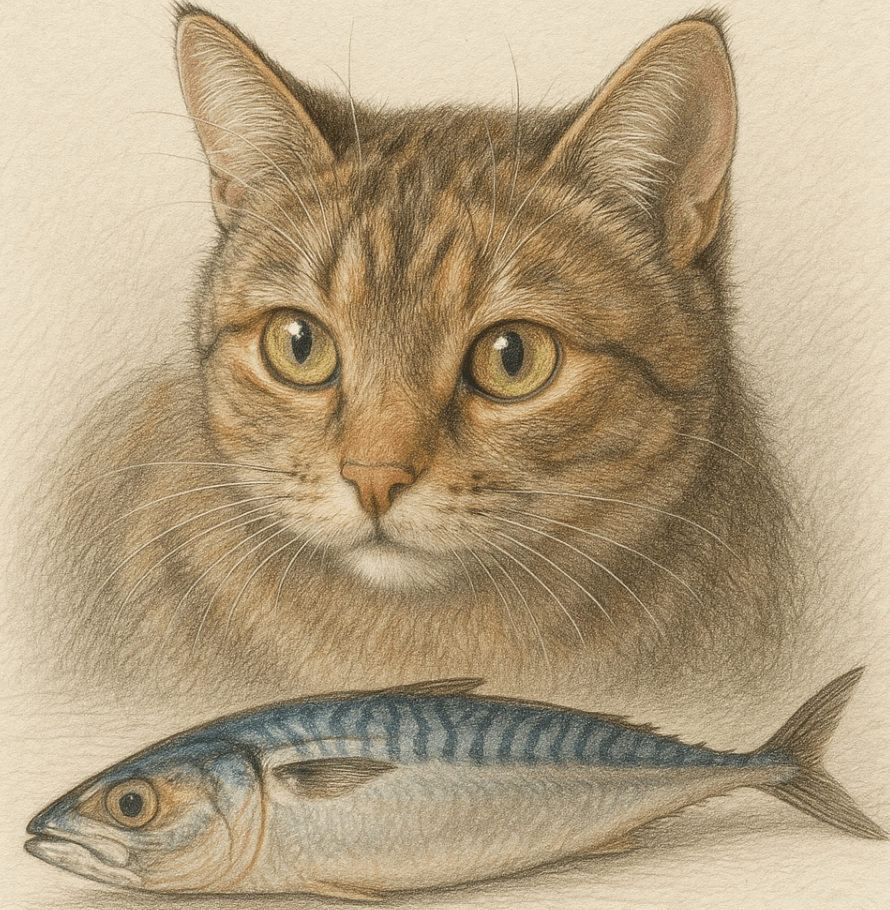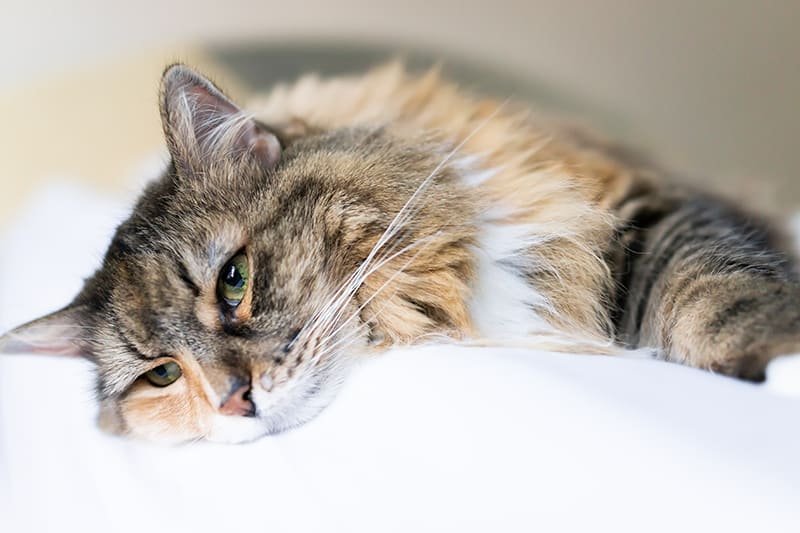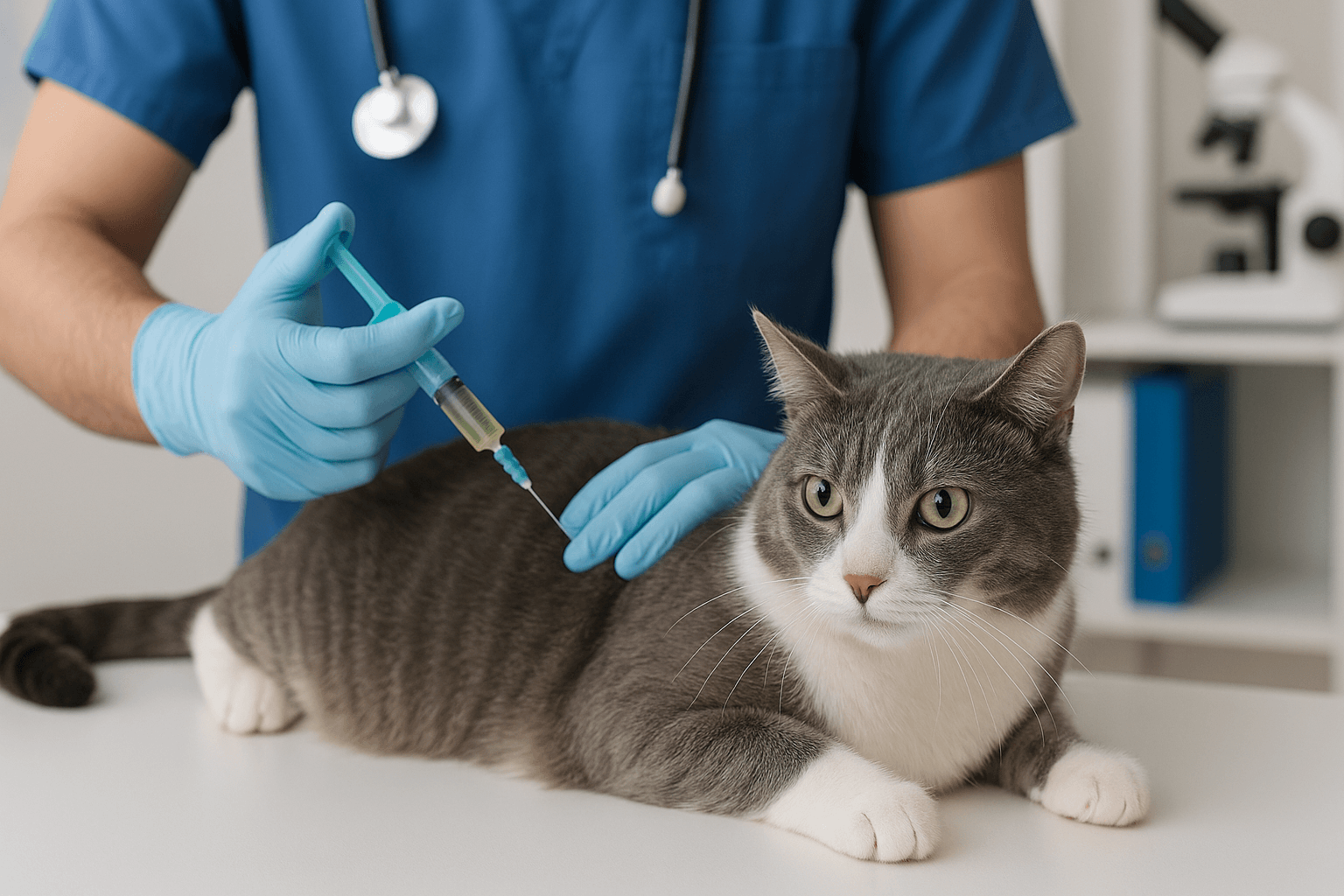Can Cats Eat Mackerel? A Guide to Feeding Your Feline Friend
Cats are obligate carnivores, meaning their diet should primarily consist of animal-based proteins. Among the many fish options available, mackerel often catches the attention of cat owners due to its rich flavor and nutritional benefits. But can cats eat mackerel safely? While this oily fish is packed with omega-3 fatty acids and essential nutrients, there are important considerations to keep in mind before adding it to your cat’s menu. In this blog post, we’ll explore the pros and cons of feeding mackerel to your cat, how to prepare it safely, and what alternatives might be better suited for their dietary needs.
Benefits of Feeding Mackerel to Cats
Mackerel can be a nutritious treat for cats when served in moderation. Its nutrient-rich profile offers several health benefits that support your feline’s overall well-being.
High in Omega-3 Fatty Acids:
Omega-3s promote healthy skin, a shiny coat, and reduced inflammation, making mackerel a great occasional treat.Rich in Protein:
As a high-protein food, mackerel aligns with a cat’s natural dietary requirements, supporting muscle maintenance and energy levels.Supports Joint Health:
The anti-inflammatory properties of omega-3s can help alleviate joint pain, especially in older or arthritic cats.Boosts Immune Function:
Vitamins like B12 and minerals like selenium found in mackerel contribute to a stronger immune system.Encourages Hydration:
If served fresh or lightly cooked, mackerel can provide moisture, helping cats stay hydrated.
While these benefits make mackerel appealing, it’s crucial to feed it sparingly and in the right form to avoid potential risks.
Potential Risks of Feeding Mackerel to Cats
Despite its nutritional value, mackerel isn’t without risks. Overfeeding or improper preparation can lead to health issues that outweigh its benefits.
High Fat Content:
Mackerel is naturally high in fat, which can upset a cat’s digestive system if consumed in excess.Thiamine Deficiency Risk:
Regular consumption of raw fish, including mackerel, can interfere with thiamine absorption, leading to neurological problems.Mercury Exposure:
Like many large fish, mackerel may contain traces of mercury, which can accumulate over time and harm your cat’s health.Allergic Reactions:
Some cats may be allergic to fish, resulting in symptoms like vomiting, diarrhea, or skin irritation.Seasoning and Additives:
Pre-packaged or canned mackerel often contains salt, spices, or oils that are harmful to cats. Always opt for plain, unseasoned fish.
Understanding these risks ensures you can make informed decisions about incorporating mackerel into your cat’s diet.
Check this guide 👉Can Cats Eat Cranberries? Best 7 Expert Tips!
Check this guide 👉Can Cats Eat Tuna? Best 7 Expert Tips!
Check this guide 👉Can Cats Eat Chorizo? Best 7 Expert Tips!

Safe Ways to Serve Mackerel | Risks to Avoid When Feeding Mackerel |
|---|---|
Plain, cooked mackerel (no seasoning) | Raw mackerel containing harmful bacteria |
Small portions as an occasional treat | Excessive fat leading to obesity or upset stomachs |
Fresh mackerel free from additives | High mercury content from frequent feeding |
Boneless fillets to prevent choking | Salted or smoked mackerel causing sodium toxicity |
Mixed with regular cat food in moderation | Thiamine deficiency from prolonged consumption |
How to Safely Prepare Mackerel for Your Cat
If you decide to feed mackerel to your cat, preparation is key to ensuring their safety and enjoyment. Follow these guidelines to minimize risks.
Choose Fresh or Frozen Mackerel:
Opt for fresh or frozen mackerel without added preservatives or seasonings. Avoid canned varieties unless they’re specifically labeled as safe for pets.Cook Thoroughly:
Cook the mackerel plain—no oil, butter, or spices—and ensure it’s fully cooked to kill any harmful bacteria.Remove Bones:
Carefully debone the fish to prevent choking hazards or injuries to your cat’s mouth or throat.Serve in Small Portions:
Limit mackerel to small amounts once or twice a week, ensuring it doesn’t replace balanced cat food.Monitor for Reactions:
Watch your cat closely after introducing mackerel for signs of allergies or digestive upset.
By following these steps, you can safely incorporate mackerel into your cat’s diet as an occasional treat.
Signs Your Cat May Not Tolerate Mackerel
Not all cats will react well to mackerel, even when prepared safely. Keep an eye out for these warning signs that indicate intolerance or adverse effects.
Vomiting or Diarrhea:
Gastrointestinal distress is a common reaction to unfamiliar or improperly prepared foods.Lethargy or Weakness:
These symptoms could indicate a more serious issue, such as thiamine deficiency or mercury poisoning.Skin Irritation or Itching:
Allergic reactions may manifest as redness, itching, or hair loss around the face or paws.Loss of Appetite:
If your cat refuses to eat after trying mackerel, it may not agree with their digestive system.Excessive Drooling:
Drooling can signal nausea or discomfort caused by consuming something unsuitable.
Recognizing these signs early allows you to seek veterinary advice promptly and adjust your cat’s diet accordingly.
Common Mistakes to Avoid When Feeding Mackerel
Feeding mackerel to your cat requires attention to detail to avoid mistakes that could harm their health. Here are some pitfalls to steer clear of.
Overfeeding Mackerel:
Too much mackerel can lead to obesity, digestive upset, or nutrient imbalances in your cat’s diet.Using Seasoned or Smoked Varieties:
Salt, spices, and smoke flavoring are toxic to cats and should never be included in their meals.Ignoring Mercury Levels:
Feeding mackerel too frequently increases the risk of mercury exposure, which can damage your cat’s kidneys and nervous system.Serving Raw Fish Regularly:
Raw mackerel can harbor bacteria and interfere with thiamine absorption, leading to serious health issues.Neglecting Portion Control:
Even small cats can suffer from overeating, so always measure portions carefully.
Avoiding these mistakes ensures your cat stays healthy while enjoying the occasional treat.
Alternatives to Mackerel for Your Cat’s Diet
If you’re hesitant about feeding mackerel, there are plenty of other protein-rich options that offer similar benefits without the associated risks.
Cooked Chicken:
Plain, boneless chicken is a staple protein source that most cats love and tolerate well.Salmon (in Moderation):
Rich in omega-3s like mackerel, salmon is a popular alternative but should also be fed sparingly.Sardines (Packed in Water):
Low in mercury and high in nutrients, sardines are a safer fish option for cats.Turkey:
Lean turkey meat provides a tasty and easily digestible protein source.Commercial Cat Food with Fish Ingredients:
Many high-quality cat foods already include fish as part of a balanced formulation, eliminating the need for additional treats.
These alternatives allow you to diversify your cat’s diet while prioritizing their health.
Understanding Your Cat’s Nutritional Needs
Cats have specific dietary requirements that must be met to maintain optimal health. Understanding these needs helps you make better decisions about treats like mackerel.
Obligate Carnivores Require Animal Protein:
Cats thrive on diets rich in animal-based proteins, which provide essential amino acids like taurine.Hydration is Critical:
Cats often don’t drink enough water, so moist foods like fresh fish or wet cat food can help keep them hydrated.Avoid Carbohydrates and Fillers:
Unlike humans, cats don’t benefit from carbs; focus on protein-heavy foods instead.Balance is Essential:
Treats like mackerel should never exceed 10% of your cat’s daily caloric intake to maintain a balanced diet.Consult Your Veterinarian:
Every cat is unique, so seeking professional advice ensures you tailor their diet to their individual needs.
By keeping these principles in mind, you can provide your cat with a nutritionally sound diet that keeps them happy and healthy.
Frequently Asked Questions About Cats and Mackerel
How often can I feed my cat mackerel?
Mackerel should only be given as an occasional treat, no more than once or twice a week, to avoid health risks.
Is canned mackerel safe for cats?
Canned mackerel is generally unsafe due to high sodium content and additives. Always choose plain, fresh mackerel instead.
Can kittens eat mackerel?
Kittens have sensitive digestive systems, so it’s best to avoid feeding them mackerel until they’re older and fully developed.
What are safer fish alternatives for cats?
Salmon, sardines, and whitefish are excellent alternatives, provided they’re cooked plainly and served in moderation.
What should I do if my cat eats too much mackerel?
Contact your veterinarian immediately if your cat shows signs of illness after consuming large amounts of mackerel.
Balancing Treats and Nutrition for Your Cat
Feeding mackerel to your cat can be a healthy and enjoyable experience if done responsibly. By understanding the benefits, risks, and proper preparation methods, you can provide your feline friend with a tasty treat that supports their well-being. Remember, moderation is key—mackerel should complement, not replace, a balanced diet tailored to your cat’s needs. Always consult your veterinarian before introducing new foods, especially if your cat has underlying health conditions. With careful consideration, you can ensure your cat enjoys the occasional bite of mackerel safely and happily.
Is the Rubber Tree Cat Safe? Best 7 Expert Tips! Discover expert advice on keeping rubber plants safely in cat-friendly homes and learn top tips for pet-safe plant care.
Low Red Blood Cell Count in Cats: Best 7 Expert Tips! Discover causes, symptoms, and treatment options for feline anemia. Learn how to support your cat’s health effectively with expert advice.
Understanding Megacolon Treatment: Best 7 Expert Tips! Discover effective strategies to manage feline megacolon, from dietary changes to surgical options, ensuring your cat’s comfort and long-term health.
How to Register a Therapy Cat: Best 7 Expert Tips! Discover essential steps to certify your cat as a therapy animal, prepare them for training, and make a meaningful impact in therapeutic settings.




